Taking Stock of Cinema Treasures
posted November 4, 2010 1 Comment
![]()
A Website for the Theater Fanatic in Us All
By Peter Monaghan

All but about 17 movie fans in all of creation have had a favorite cinema – the one where they learned their love of the moving image, or the taste of their first love’s lips; the one that smelled of the sea and only half-blocked the rush of passing traffic; the one where they heard dropped Milk Duds roll from the back to the front of the house; the one where they sat, gobsmacked, at the rippling pecs of George Lazenby, or at the undress of Ursula Andress – in her breakout Dr. No (1962), or perhaps later, in Mountain of the Cannibal God (1978).
But I digress. Cinema-house nostalgia is one thing, but Ross Melnick, Patrick Crowley, and Andreas Fuchs, together with a trusty band of volunteers, have gone to lengths no other movie fans would likely contemplate in compiling a breathtaking database of movie houses. On their website, Cinema Treasures, they commemorate the glorious theaters, the formerly glorious, and those of fading memory. On the site, as in a 2004 book, Cinema Treasures: A New Look at Classic Movie Theaters (MBI), they present, in generous detail, the where, when, and whither of 28,500 cinema houses, and counting. Most – about 22,000 – are in the United States, but houses in 170 other countries are included, too. The site also provides plenty of news about theater restorations, closures, and other related developments.
Melnick’s book, prepared with Fuchs, is a generously illustrated history of the American movie theater from the early nickelodeons through to the big-box, megaplex cinema centers of recent times – and all the fabulous and not-so-fabulous movie palaces, cozy single-screens, twins, triplexes, and multiplexes, between.
Says Melnick, the website’s co-founder: “It started as a lark, and then when we finally started doing it, it went a lot better than we’d thought it would. We heard from a lot of people who said ‘This is what we want.’”
The stories of cinema houses are rarely told: the lives of the buildings that have accommodated the projections and the dreams, and the effects on them of trends in urban decay or “renewal,” of social practices around movie-going, and of film-industry requirements for their blockbusters and small independent filmmakers’ modest gems. In the large-format book, each chapter details one period of movie-theater history and features classic theaters that still show films, today. Photo spreads present interior and exterior shots. Also provided are histories of the theaters; recollections of staffers, patrons, and owners; and material of the kind found on the website: theater specifications such as screen size, seating capacity, past owners, design features, and architectural style; a timeline of important media, historical, and film events at the theater; and such ephemera as photographs and period advertisements.

Each chapter also includes a “curtain call” of noteworthy theaters that fell victim to demolition, or were converted to new, almost invariably more mundane uses. The book is a love letter to the splendor and variety of movie houses – to their scale and character, and to their stylistic summoning of varied lands and times. In fact, the site does moviegoers a great service by alerting them to the variety of architectural styles they may enjoy greatly but little comprehend.
Melnick and co. draw attention to features that reflect the Italian Renaissance predilection for symmetry, the glories of Spain during its centuries of Moorish domination, and the temples of ancient Egypt. Umpteen American theaters have been named The Egyptian, their exteriors resembling grand places of ritual, their interiors incorporating hieroglyphics and multi-colored Egyptian designs. As Cinema Treasures points out, the embrace of such motifs began in the 1920s, soon after the 1922 unearthing of King Tut’s tomb. At about the same time, the Tudor Revival style – half-timbered houses like those of the Elizabethan and Jacobean eras of the late 16th and early 17th centuries – won favor in the United States. The result was movie theaters with overlapping gables, parapets, and intricate brick patterns.
Less common, but just as captivating, were the theaters built in such styles as the East Indian, with temple architecture and elaborate ornamentation – arches, minarets, Persian carpets, and sumptuous frescoes.
Fox Theater, Oakland, Past & Present
1920s B&W and modern-day color photos (color photos: Randall Michelson), Fox Theater, Oakland, CA; courtesy Fox Theater
{Click on thumbnail to view gallery}
In the United States, not all styles have looked to exoticized foreign locations. Pueblo Deco, for example, mixed Southwest adobe architecture with Art Deco graphic styles. (The Totah Theater in Farmington, New Mexico, exemplifies this; see photos, below.)
In many nations, hybrids have emerged, whether through ignorance of original elements, or a fascination with them all. So, the Adamesque style, heavy on ornamentation and bright colors, and named after its champion, the British architect Robert Adam (1728-1792), combined Neoclassical, Renaissance, Egyptian, and Etruscan motifs. It’s hard to bear in mind, today, that movie palaces of the heyday of silent film, and the first decades of talkies, were often huge structures of over 5,000 seats, built to accommodate crowds that even today’s megaplexes can barely imagine (a stunning example, in a town where you might not expect it, is the Al. Ringling Theatre in Baraboo, WI).
But Cinema Treasures draws attention to many historical contingencies, such as the triumph of American car culture – it, the site notes, led to a 1950s boom in not only drive-ins, but also suburban cinemas with ample parking.
The Cinema Treasures project began 11 years ago when Melnick and Crowley met while working in New York for a short-film website whose offices were in a tech incubator near Greenwich Village. Recalls Melnick: “Everybody was buzzing about money and what could be done on the web, and I got to thinking, there must be something more you can do than sell dog food.” Both he and Crowley have diversified, since that time. Crowley, a graphic designer as well as aspiring film director, works for a web-based calendar company and a web-development firm. Melnick works in academe. But taking on “real jobs” has not prevented them from carrying out a plan hatched during those days in New York. They reasoned that while some books on cinema architecture did exist, the best, such as David Naylor’s Great American Movie Theaters (Preservation Press, 1987), were becoming outdated. And they saw the Internet as the perfect vehicle for a new aggregation – highly flexible, instantly updatable.
They launched their site in December, 2000, with 125 theaters, listed on code that Crowley wrote. Soon after, a long, front-page Hollywood Reporter article about bankruptcies among megaplexes (which often had cannibalized old movie theaters) mentioned the Cinema Treasures site. Says Melnick: “That sent us on our way because a lot of people in the industry saw that and helped us.” (Andreas Fuchs, a cinema operator and consultant to exhibitors worldwide, saw the article, too, and that led to his collaboration with Melnick on the book version of Cinema Treasures.)
One irony, of course, was that while working for a company that, like many, was trying to “monetize” the web – attract venture capital, build the site, sell it and move on to the next one… – they had found a way not to make money from it. At least, notes Melnick, their project has outlasted the companies they then worked for. “We never intended to be a for-profit. We just wanted to create something that we would love to have, ourselves, and that other people would care about, too.” He recalls: “Not many people back in 1999 were thinking about digital humanities – community, wiki, wiki-plus-blog… I’m sure it was happening at many libraries and museums, but it wasn’t happening in the media business.”
Tracking down more than 28,000 cinemas, present, past, and disappeared, let alone recording copious details of their architecture and history, is of course no small undertaking. For its success, the Cinema Treasures website depends on its “community built” model: Volunteers and visitors add theaters that they know of, or find out about. In the site’s early days, organizers and contributors spent countless hours identifying theaters by poring over cinema books, yellow pages, historical documents, and museum holdings, or Google-sifting until their fingers bled. Even Melnick and his colleagues have thought, from time to time, that surely they must be exhausting at least the store of American cinemas. But that seems never to happen. Says Melnick: “What happens is we might get three new theaters added each day, and then someone sees the site, and suddenly we walk in one day and we’ve got 30 a day added from Chicago, or Hong Kong. It just builds on itself. People really want to help because they realize that it’s a unique resource.
“We have a lot of theaters that unfortunately are listed under closed/demolished. They exist only digitally. They’re a parking lot, or an office building, or a skyscraper.”
Those have been victims of fires, economic depressions, white flight and urban blight, real-estate development, economic competition, and – worst of all – indifference to the rich cultural legacy that they represent. But that, says the optimistic Melnick, only makes every restoration effort all the more valuable.
Volunteers have powered the site, all along. While content is provided by contributors, it is all vetted by an editor – Brian Krefft, at first, and now Ken Roe, an expert on theaters worldwide who lives in London. The site’s blog editor is Michael Zoldessy, based in Los Angeles, who has gathered some energetic columnist-bloggers.
That leaves Crowley free to work on technical issues, and Melnick to oversee content and marketing.
Melnick professes a broad affection for movie houses, and his website and book bare this out, with detailed coverage of not only houses, but also their architects – Thomas Lamb, S. Charles Lee, Rapp & Rapp, and others who wished to instill bricks and mortar with inspiration and fantasy.
His research tends to focus on cinemas of the teens to the ’30s, although he is drawn to any and all theaters that have intrinsic cultural, social, historical, or architectural interest. In fact, when it comes to visiting theaters as a viewer, his greatest love is cinemas built after World War II and too young to attract landmark status, even though they may have great significance in the history of film exhibition.
When it comes to visiting cinemas, he has a simple approach: “I try to choose whenever possible the theater that matches the experience I’m looking for. So if it’s an event film, I like to see it in a venue that is going to create a crowd. And there’s nothing better than seeing a classic movie in a classic movie theater.”

He has his favorite cinemas, like the Arlington Theater in Santa Barbara – a 1931, 2,000-seat first-run house, and “the only theater I routinely drive two hours to” – and drive-ins like the Mission Tiki, in Montclair, Cal. “It’s really about what I want to see. If I want to see a dopey comedy, it might be a nice drive-in movie,” he says.
“That’s what’s great about moviegoing in 2010. Because there are a lot of older theaters left, thankfully, at least in places like Los Angeles and Seattle and other cities and small towns around the country, you can still in many places try to choose your experience. What’s really tragic is when you live someplace and all the old theaters are gone, and you’re left with perhaps only one choice. That choice may provide widescreen and great projection and sound, but not the historical context, the flavor, the texture, that an older theater can.”
Unlike a lot of cinema-house fans, he gravitates to postwar architecture. “One of the most endangered structures in the U.S., and probably in the world, is the postwar movie house – just because the ones built in the ’60s and ’70s, the single screens, they were not built with stages, and they have no dressing rooms, and they typically don’t have a lot of parking. So, there’s very little reuse, and they’re not always recognized as, quote-unquote, historic, so they don’t have a lot of preservation groups arguing for them.”
Among major losses, he counts classics like the Paramount (1926-1964), Capitol (1919-1968), and Roxy (1927-1961) theaters in New York; the Fox (1929-1963) in San Francisco; the Mastbaum (1929-1958) in Philadelphia; the Paradise (1928-1956) in Chicago; the Loew’s Grand (1892-1978) in Atlanta; and the Carthay Circle (1926-1969) in Los Angeles. Among newer ones, lost but not often mentioned, are the Indian Hills Theater (1962-2001) in Omaha; Cooper Theater (1962-1991) in St. Louis Park, MN; UA The Syosset (1956-1995) in Syosset, N.Y.; the original Cine Capri (1966-1998) in Phoenix; and the Martin Theatre (1962-2001) in New Orleans.
There is, thankfully, some good news: “After many years of being torn down, at least the larger theaters have public-private support because they’re recognized for their architectural significance.” And that is affecting the look of new multiplexes, he notes: “More and more exhibitors are embracing the past in their contemporary designs or incorporating older theaters into their new theaters.”
The Cinema Treasures databank lists the architects and firms responsible for movie houses, current operation status, tourist accessibility, number of seats and screens, and programming details. In the future, Melnick and his colleagues may add other data such as builders and seating companies.
That will depend on finances. With all its heavy load of data, Cinema Treasures is already a complex, costly site to maintain, but it has managed to keep moving forward with donations.
Melnick admits that he probably knows only half the reasons people come to the site. He has heard from visitors who have used the site to find closed theaters, and then work to re-open them. And many exhibitors, concert promoters, and travel agents visit, too. So do grant writers, when gauging how other theaters have used public restoration funds.
Less happily for Melnick and Co., representatives of the real-estate departments of drug-store chains make use of it, too, when looking for closed theaters they can take over. “Those don’t get my help,” says Melnick. “We’re not in the business of helping people gut historic sites.
“But that’s the nature of the web.”
Ready accessibility makes the site handy for scholars looking for raw data. Melnick, himself, has recently completed a doctoral degree in film and television studies. His research focus is on the convergence of film, music, and broadcasting in the 1920s. “A lot of the theaters in the 1920s were broadcasting their stage shows over the radio,” he notes.

He teaches at both UCLA and Otis College of Art and Design, in Los Angeles. At the former, he leads a graduate seminar about film exhibition after 1970.
His specialization is in exhibition studies, a field that has boomed in recent years. Since he started his doctoral studies in 2002, he has seen the number of presentations and then panels increase rapidly at annual meetings of the Society for Cinema and Media Studies conventions. With regards to cinema houses, new and old, this has taken the form of presentations of histories of specific cinemas as well as studies about cinemas’ connections with issues of class, race, demographic and geographic distribution patterns, and much else. Says Melnick: “There’s much greater emphasis in the field on exhibition. Whether through your computer, in an airplane, through your iPhone, or in a movie theater, people are very interested in the context of consumption and exhibition.”
He is currently turning his dissertation into a book, and is also working on another book on international exhibition, looking at the building between 1920 and 1975 of Paramount and Fox theaters around the world, as part of the development of foreign exhibition circuits. “It’s a rather undiscovered, not-well known phenomenon,” he says.
And when did his passion for the cinema house begin?

“I can tell you exactly when the moment was,” he says. It was in 1996. He had grown up on the East coast, in South Carolina and New York, loving movies, but with little access to classic houses, as so many of them had been refitted or knocked down. Then, he came to Los Angeles, in 1996, and began to take stock of what the East had lost, and caught the passion. He recalls: “It was the week that Independence Day opened at the Fox Theater in Westwood. That was a fairly transformative experience for me. There were blocks-long lines of people waiting to get into this one movie theater, this old, ’30s, beautiful movie house; and I had never seen anything quite like it, growing up.
“My apartment overlooked the back of the theater, so every day I could watch these giant lines waiting to get into the theater. It definitely had an influence on me.
“I then ended up working in the film industry for a while. From there, I never lost the interest. When I got to New York, talking to Patrick, I decided to do something hopefully useful and interesting with our lives and skills.”
Cinema Treasures is the result: “It exists because we find movie-going and classic movie theaters an indelible part of our culture, of our own personal and cultural experiences,” says Melnick. “Everybody has great memories of movie theaters, even if they’re not great movie theaters.” As he says, memories of them often as so strong that “people never quite get over their favorite theater, and 40 years after a theater has been torn down, or even 10 years after people have moved away from an area, the way they go back home is to check in on their favorite theater.”
n
One of the Finest: Ringling Theater, Baraboo, WI
{Click on an image to expand}
The Al. Ringling Theatre, in Baraboo, WI, designed in 1915 by Chicago architects C.W. and George Rapp, was one of the first examples of palatial design applied to the moving-picture theatre in the United States. Its design derived from the Opera House of the Petit Trianon in the Palace of Versailles. It was entered on the National Register of Historic Places in 1976. Photos courtesy of Al. Ringling Theatre (www.alringling.com)
Previous Post: Update: American Indian Film Gallery
Next Post: Workshop on Personalized Access to Cultural Heritage

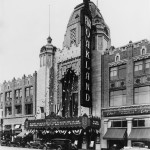
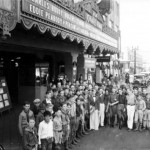
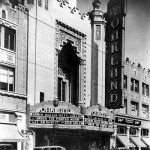
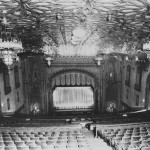
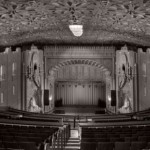

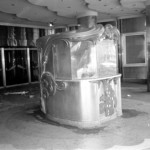
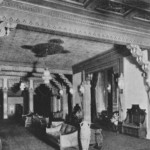

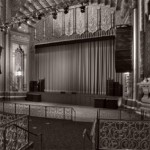
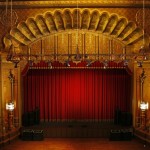

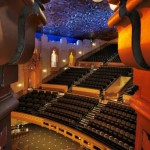
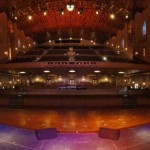
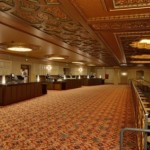

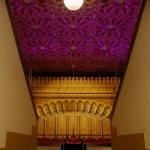



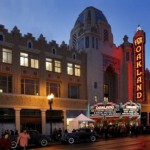
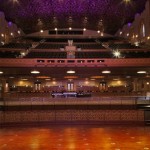
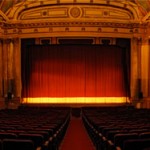
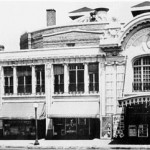
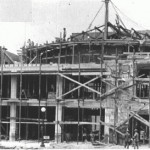
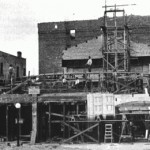


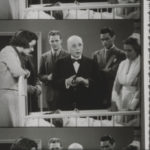




Great job. My favorite was the Riviera in Chicago.